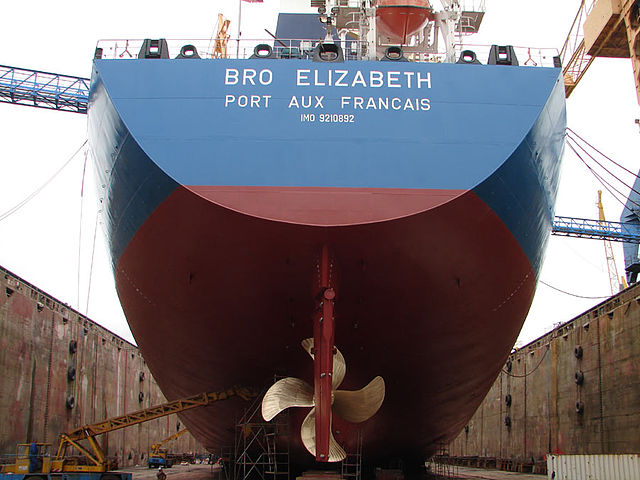Top Qs
Timeline
Chat
Perspective
Transom (nautical)
Flat part of a boat's squared stern From Wikipedia, the free encyclopedia
Remove ads
A transom is the aft transverse surface of the hull of some boats and ships forming its stern. Adding both strength and width to the stern, a transom may be flat or curved, and vertical, raked aft (known as an overhung or "counter" stern), or raked forward (and "reversed",[1] also known as retroussé).[2] In small boats and yachts, a flat termination of the stern is typically above the waterline, but large commercial vessels often exhibit vertical transoms that dip slightly beneath the water.[3]

On smaller boats such as dinghies, transoms may be used to support a rudder, outboard motor, or other accessory. On some yachts the transom may include a hinged swim platform, and a lazarette for deck items and leisure toys.[4]
Remove ads
Etymology
The term was used as far back as Middle English in the 1300s, having come from Latin transversus (transverse) via Old French traversain (set crosswise).[2][5]
History
This section needs expansion with: content on the evolution of the transom over time. You can help by adding to it. (August 2025) |
Design

This section needs expansion with: the advantages and disadvantages of transoms, and the pros and cons of each design. You can help by adding to it. (August 2025) |
Gallery
- The transom of the Spirit of Bermuda, made ofBermuda cedar
- Raked transom with rudder mounting points
- Reverse transom with rudder mounted under the hull
- Transom-mounted outboard motor
- An Irwin 44 sloop with a fold-down reverse transom
- Reverse transom with integral access platform
References
Wikiwand - on
Seamless Wikipedia browsing. On steroids.
Remove ads







